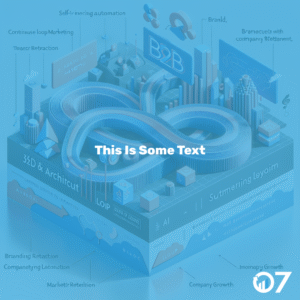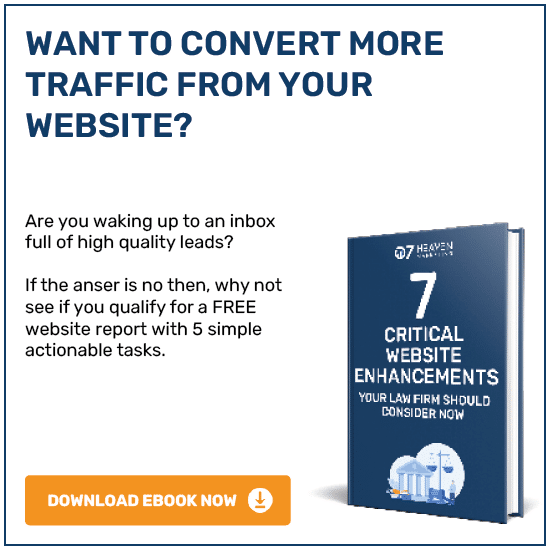You have decided that your website needs a change, how do you make sure the new website outperforms your old one? This blog helps you make sure that you redesign is an investment not a cost.
There are many reasons to decide your website needs a redesign, template website too restrictive, moving web development providers, previous website not performing how you want/expected, doing the website in house, etc the list is endless, but the answer is not. Using the strategy below you can avoid your website redesign being a tedious task and dragging on and on.
1) Benchmarking
Before jumping in to looking for a new developer or researching websites you like, you need to understand what has worked and not worked on your existing website. Check the below metrics to benchmark your current website.
- Monthly average number of visits/visitors/unique visitors
- Monthly average bounce rate
- Top performing keywords (rank, traffic, and lead generation
- Number of inbound linking domains and what pages they link to
- Monthly average leads/form submissions from your website
- Monthly average sales generated from the website
- Traffic to each of the web pages that you have.
If you do not have this information then jump onto your google analytics (If you don’t have access then contact us and we can assist). If you are confused by any of the above then you are welcome to contact us for assistance. Make a note of which tools you used to identify each of these benchmarks, as you will want to use the same tools to compare for the new website.
2) Goals
We have found that this is the area that most gets overlooked by our clients before they come to us. What we commonly hear is flimsy reasoning like “my competitor has just updated their website” or “it has been a while since I did mine”. These are reasons to begin looking at redesigning, but are not goals. Websites are more about what they achieve for you, not so much about how they look. Understand what you want to achieve with your website and then pick the metrics that will help you judge how you are progressing.
- Increasing the number of visits/visitors
- Reducing the bounce rate
- Increasing time on site
- Improving domain authority
- Increasing the number of leads/form submissions from your website
- Increasing the total sales generated from your website
- Improving your websites current position in SEO Rankings for set keywords
This is not a case of jut picking one its about which one will give you the best result first and then look to improve the others.
3) Branding
Before you can design the website or put together the content for your new website you first have to be clear about your branding, messaging and your unique perceived benefit (UPB). This needs to be clear throughout the website from the very beginning, but also needs to be remembered for after the website is live for anyone who is updating or improving the website.
Once you are happy with your branding and messaging you need to think about how best to interact with your target persona (next section). Be clear and concise language, avoiding over doing the industry jargon, which makes you sound like a robot. Here is an example of how we could describe 07 Heaven Marketing using industry jargon:
07 Heaven helps companies reduce churn by backfilling the sales pipeline with highly qualified traffic that allows businesses to convert the Marketing Qualified leads into new customers. We achieve this by through implementation of the latest techniques of Inbound Marketing and leading edge software that intergrates all your digital marketing channels.
Confusing? Below is our actual message we use:
We partner with businesses that have clear long and short term goals they want to achieve.
We convert website visitors into lifelong clients utilising Growth Driven Design and Inbound Marketing strategies.
Better?
4) Target Audience (Buyer Personas)
Its important to understand how you want your business to be and act, but if it does not bring in any of the right clients then you are doomed to fail. Thinking about who are the right clients for you and what makes them tick, will help you answer the question they have when they land on your website, “What’s in it for me?”. Basically, what is the benefit to a client in choosing your business rather than one of your competitors.
A buyer persona is a theoretical manifestation of the ideal customers for your business. They are fictional representations based on real data about ideal customers demographics and online behavior, along with educated speculation about their goals, challenges and motivations.
For instance, if you’re a marketing manager at a hotel who is looking to bring in new business, you might target five different buyer personas: an independent business traveller, a corporate travel manager, an event planner, a vacationing family, and a couple planning their wedding reception.
Having these clear buyer personas in your head when creating the website will allow you to focus on tailoring the website for who you want to attract. Some usual pitfalls for website redesigns is copying a competitor or making the website for you not the client.
5) Protect Your Current Position
No matter the goal you choose for your website you must make sure you hold on to everything you have achieved so far. This means making sure that the metrics you have taken for your benchmarking are your starting figures, rather than starting from the beginning again. A website redesign is a great opportunity to improve your website ranking, but if you are not careful it could also have a negative effect. Here are some things to do to make sure that make sure your previous SEO efforts are not wasted:
High Search Value Pages
Find out which web pages are bringing in the most visitors, most leads and converting the most people using your marketing analytics. Make sure these pages stay a part of your website, you can update the design on them, but keep the content very similar or you can create a new page, but create a 301 redirect.
301 Redirect
This is extremely important in regard to retaining traffic and the link value of a specific page on your old website. Create a spreadsheet to show the old pages that you had on a website (the url) and then next to it what new page that will link to. Then use Google webmasters to let google know about the changes you are making.
Keyword Research
If you are changing the pages and the website text, make sure that you are still focusing on the right keyword. IF you are getting found a lot for that page then keep it, if the visits are low it might be worth looking into a better keyword that will help you reach your new goals.
6) Competition
I am a big believer in not getting too hung up on your competitors as that effort is best spent making sure you are working towards your goals and satisfying your clients. That being said it is important to keep eye on them to make sure you don’t miss out on opportunities or threats from them.
Easiest way is to just check their website out before your redesign and every couple of months after to make sure you are ahead. There are some great tools out there for measuring your competitors websites, we have a free service that does this for you.
For further insights and guidance, we invite you to explore our blog at 07hm.co.uk/blog. Here, you’ll find a wealth of information tailored to the needs and challenges of SMEs navigating the digital landscape. Additionally, if you have specific questions or need personalised advice, don’t hesitate to reach out to us via email at info@07hm.co.uk or telephone on 01702 410663.






